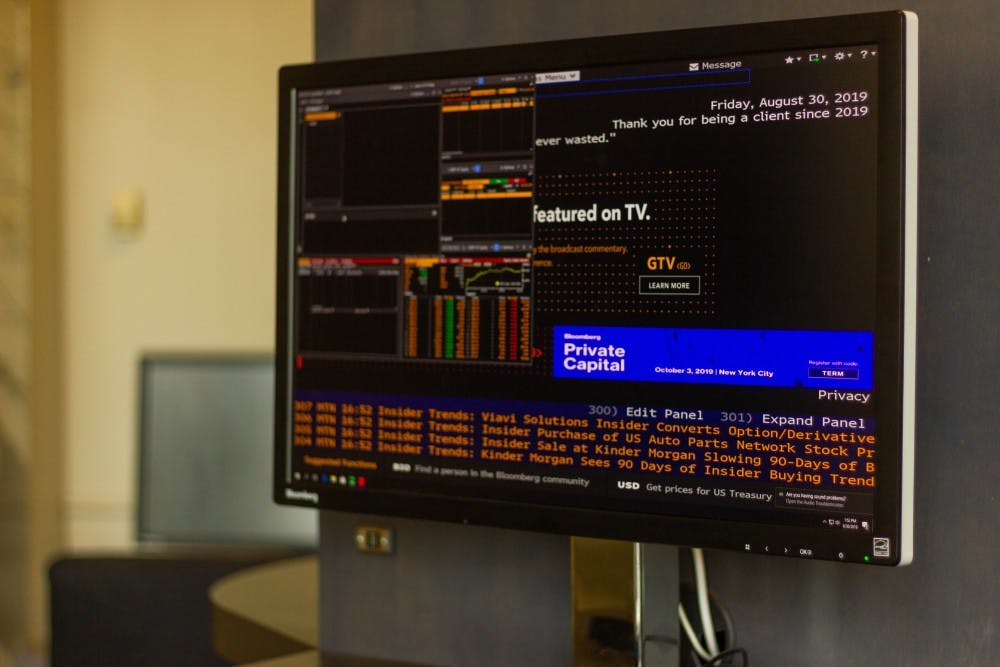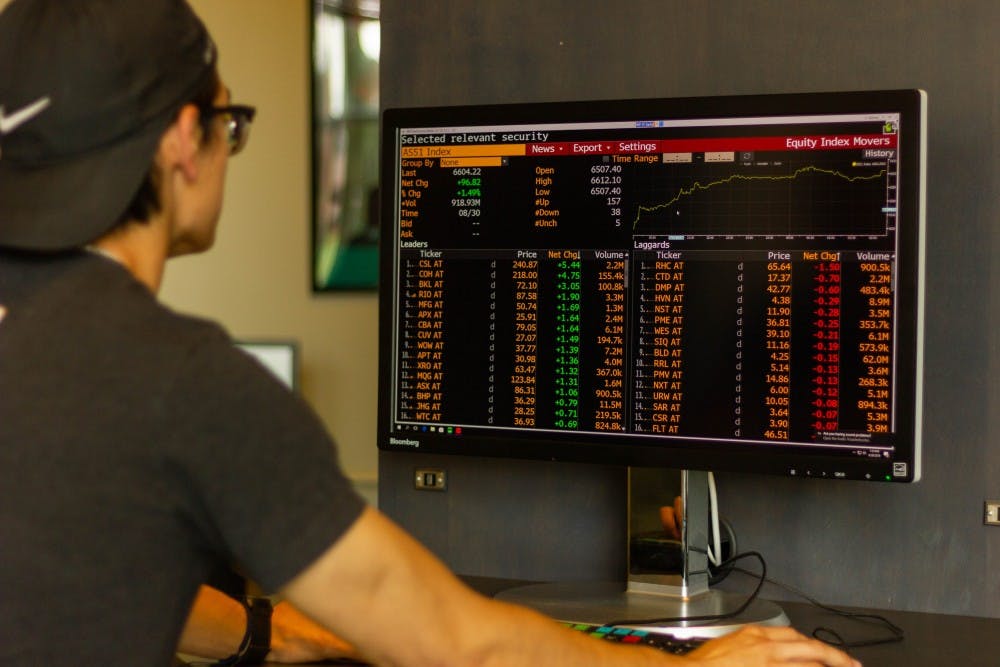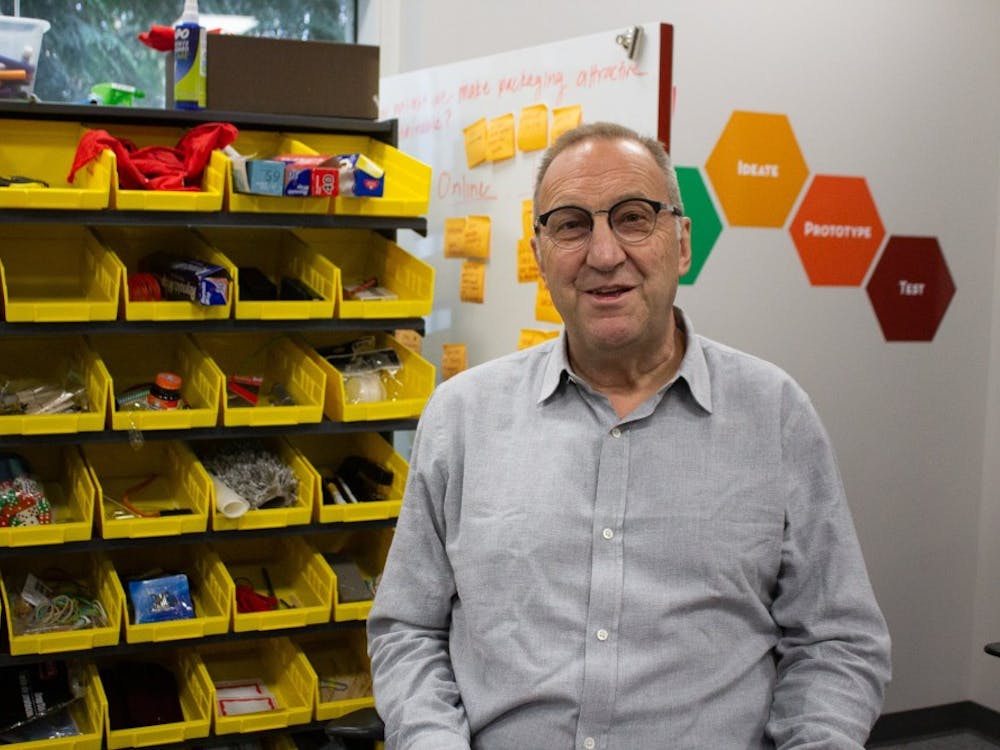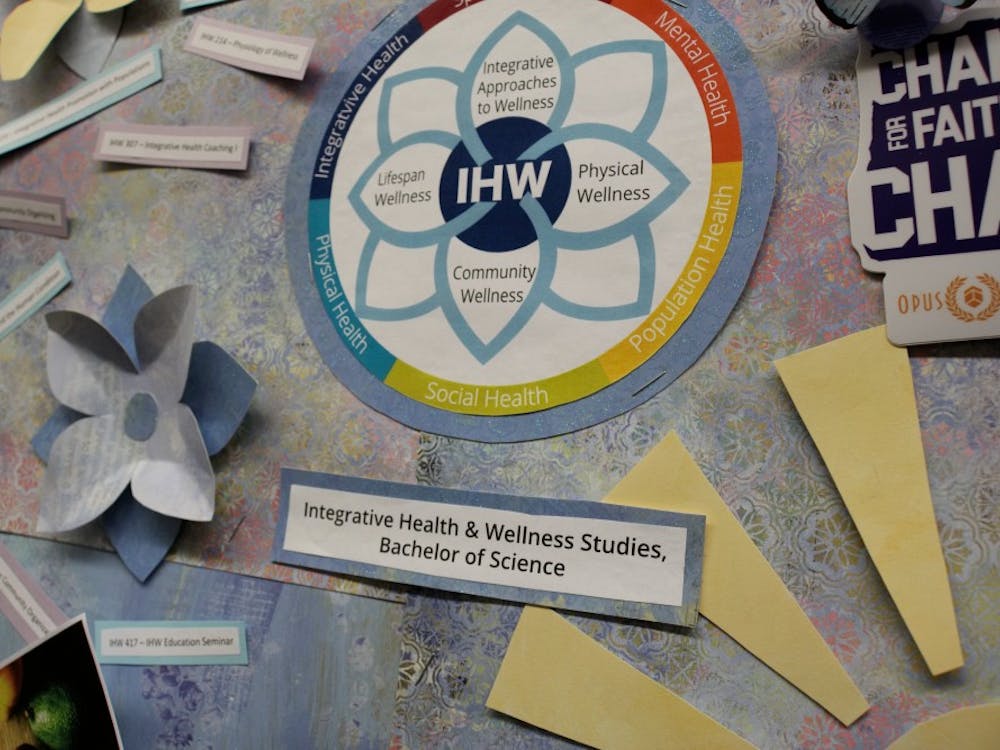With recent attacks on Saudi oil plants, growing tensions between the United States and China with the ongoing trade war and the Federal Reserve lowering interest rates, the stock market is going through chaotic times. And with a potential recession in the near future, economists are keeping their eyes fixated on market fluctuations.
Students, faculty and staff at the University of Portland are all able to watch these impacts in real-time with access to a total of sixteen Bloomberg terminals that report on everything from stocks and bonds to general news.

The Bloomberg Lab located in Franz Hall is the biggest terminal in the Pacific North West.
This could be one of UP’s best-kept secrets for those interested in financial markets. Most of these terminals, donated by former regent Karl Smith, are found in Franz Hall. The others are accessed remotely.
“You’ve heard the term big data, and that’s totally what this resource allows students to do is gain access to a ton of data, and learn how to navigate through a lot of data and figure out how to tell a story or find the information to tell a story better,” said Brian Adams, associate dean of graduate business programs.
The cost of these terminals is around $23,000 a year according to Dean of the Pamplin School of Business Robin Anderson. Bloomberg gives a university discount, which means for every one license UP pays for, the next three are free. The university is charged for four of the 16 licenses according to Anderson.
“Students and faculty utilize Bloomberg terminals to learn more about companies, countries, industries — pretty much anything you want to learn about you can at least find some information in Bloomberg,” Adams said.
Students in finance classes primarily use the terminals. To get access to the terminals, potential users need to email Adams. Bloomberg offers a certification program called Bloomberg Market Concepts. The training shows users how to navigate the program and understand the information in it. Adams said it is also a good addition to a resume.

Adams has access to this portable card that allows him to log into the program from any computer.
“It shows that you can manipulate data, it shows that you’re not scared of a large amount of data, that you know how to navigate through to find the information you need, and you are comfortable with analysis,” Adams said.
The training takes anywhere from eight to fifteen hours and involves watching a variety of videos of all the functions the terminals have.
“One of the (modules) was currencies, which is a fun one,” said sophomore business major Kaylee DeLoye. “You get to learn about all the different currencies of the world and how they work together and compare international companies.”
The only class that requires the certification is the Applied Portfolio Management course taught by Adams. Other finance classes do some work with the terminals but do not finish the certification.
“Bloomberg is interwoven in many if not most of the finance classes,” associate professor of finance Madhuparna Kolay said. “Students use it to access the latest information and analyze that information concurrently. This makes our students very up to date with the information that they get and serves to bring what happens in the real world into our classrooms.”
According to Adams, the Bloomberg research lab is on the first floor of Franz Hall, and was installed to house ten of the sixteen terminals. These terminals are normal computers with the Bloomberg software installed on them.
Two of the terminals are at the Westside Campus, and the final four are used by faculty members as Bloomberg anywhere licenses, according to Adams. These are small drives that access the Bloomberg program when plugged into a computer. Comparatively, Portland State University has 12 terminals in their Bloomberg lab but only recently installed them.

A student uses one of the Bloomberg monitors.
The lab also tracks the performance on portfolios run by UP students. A portfolio is a collection of multiple different investments such as stocks and bonds. The Bloomberg stations cannot be used to trade stocks within the portfolios, but grant access to performance data on those stocks to help students who manage the portfolios make their decisions on what to buy and sell. UP uses TD Ameritrade to make trades and manage the portfolios, according to Adams.
There are two types of portfolios that students can work on using the Bloomberg terminals.
In 2003, alumnus Frank Favro and his wife Pricilla donated $50,000 to the UPIA (University of Portland Investment Association) for students to invest without having to risk their own personal finances.
With additional donations and returns generated by students, the fund is up to $300,000 according to Adams. Since Favro died in 2009, the portfolio has not received additional funding. Every year, the Financial Management Investment Association Annual Scholarship is funded with the dividends produced by the portfolio, according to Associate Director of Donor Engagement Connie Ozyjowski.
The second type of portfolio is used in the Applied Portfolio Management course taught by Adams. This consists of short term investments, whereas the larger one is focused on long term growth.

The lab is only available only after your ID is coded to gain access into the lab.
As the U.S. stock market continues to fluctuate, UP has the rare opportunity to watch it closely. This is something that many in the UP community might not know about. According to Adams, these terminals are something that even big corporations seek out.
“For example, the US Bank Tower downtown...in that whole giant skyscraper they may have five to ten terminals total, and we have just ten down in the lab right here,” Adams said. “So students gain access to something that a lot of professionals would give money to be able to have access to.”
Austin De Dios is a reporter for The Beacon. He can be reached at dedios22@up.edu.








